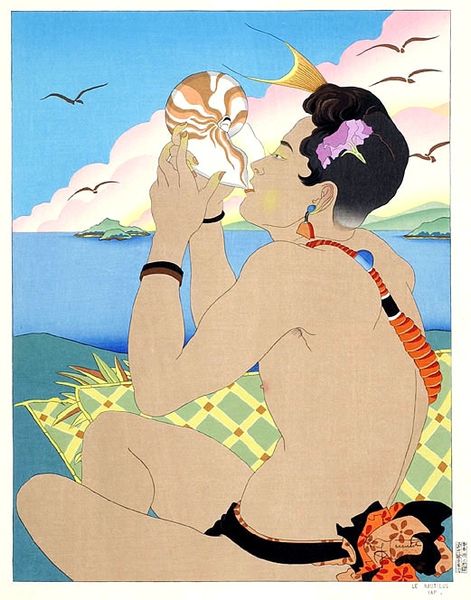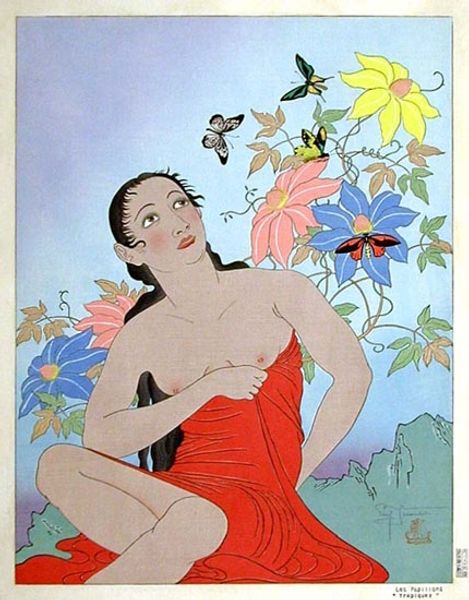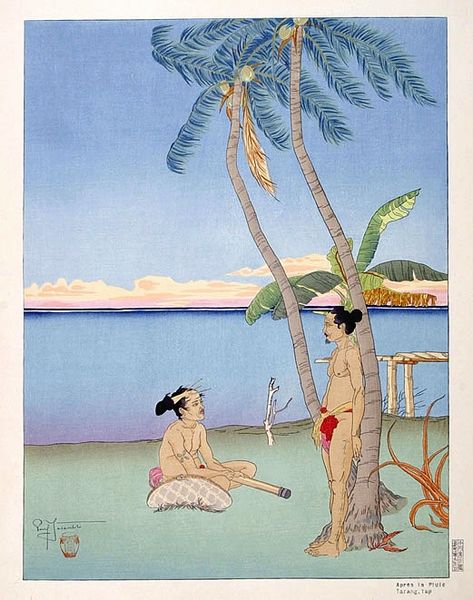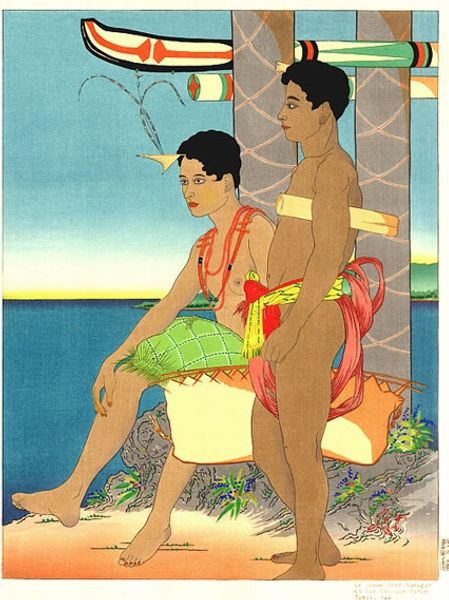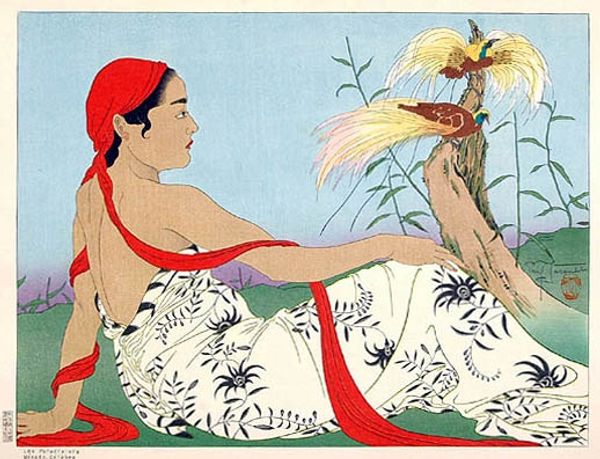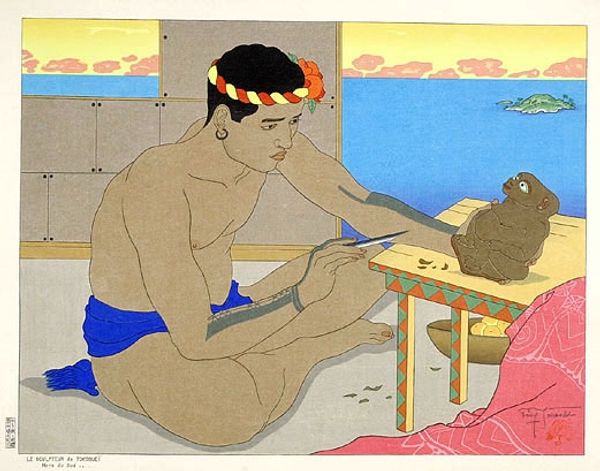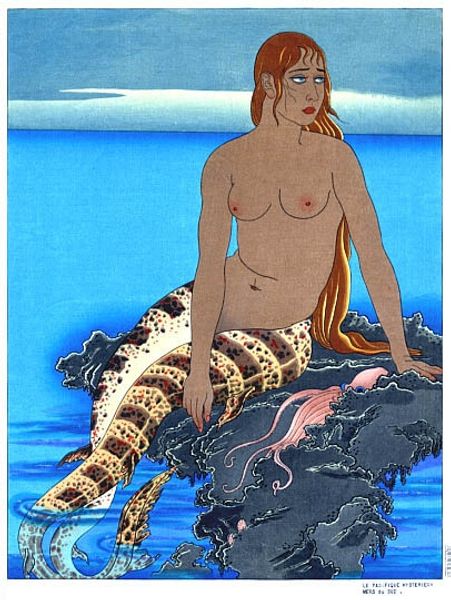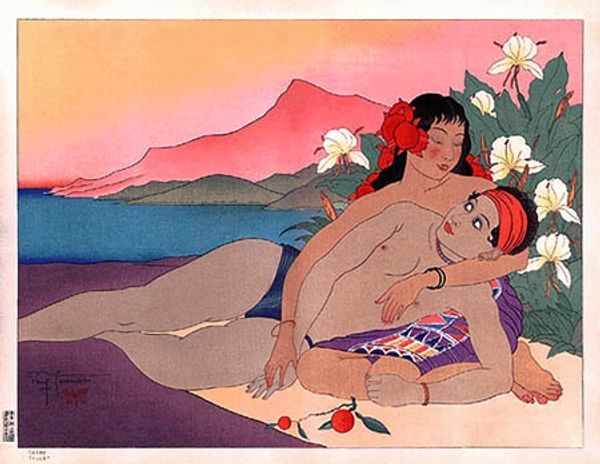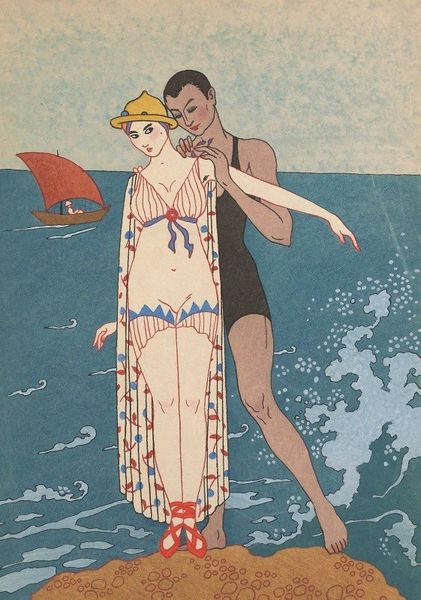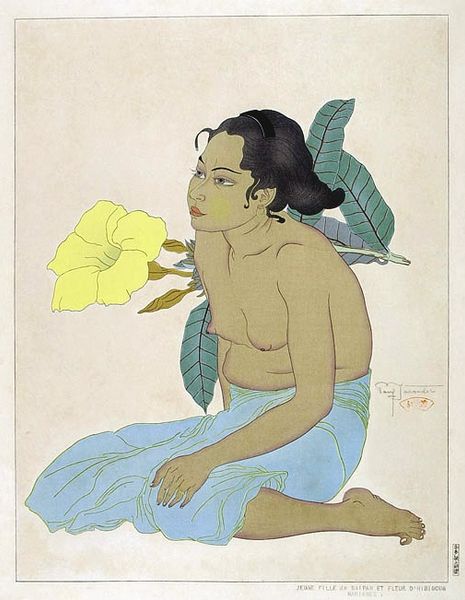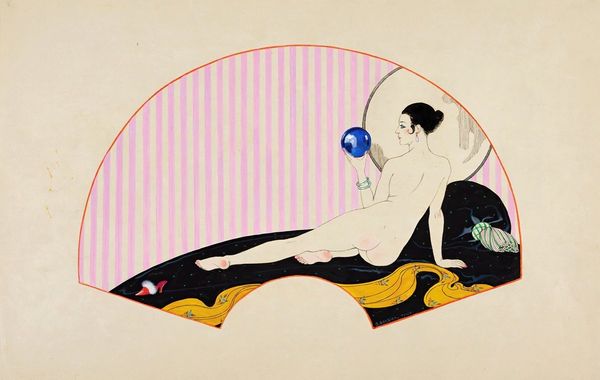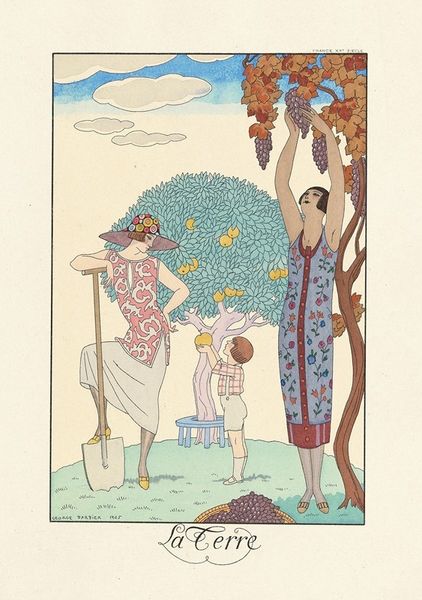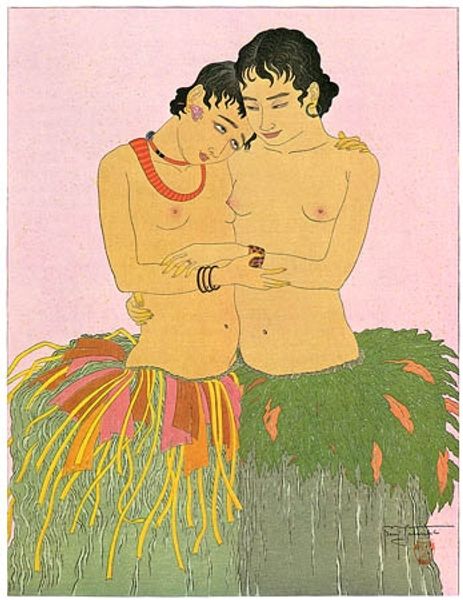
Copyright: Public domain Japan
Curator: Let's turn our attention to Paul Jacoulet's 1935 woodblock print, "Amoreux A Tarang Yap. Ouest Carolines." Jacoulet, a Frenchman who lived much of his life in Japan, documented the cultures of Micronesia through the lens of the Ukiyo-e tradition. Editor: It has an air of placid stillness, wouldn't you agree? The way he’s composed it using these flat planes of vibrant yet subdued colors. I’m struck by how that serene blue background highlights the intricate detail of the figures and the mango offered. Curator: Indeed. Jacoulet consciously positioned himself as an outsider ethnographer and artist. His works provide valuable, albeit often romanticized, records of Pacific Islander life during a period of rapid Western influence. It's Ukiyo-e filtered through a colonial gaze. Editor: That colonial gaze is evident in the rather graphic depiction of these individuals. Despite the seemingly idealized presentation, Jacoulet seems fascinated with contrasting patterns - tattoos against bare skin, the weaving of the basket juxtaposed with smooth expanses of sky. Curator: Precisely. The Ukiyo-e influence allowed him to play with visual exoticism, capitalizing on a European taste for the ‘Orient.’ He straddles the line between ethnographic documentarian and purveyor of romantic fantasies. Editor: I am drawn to the balance and tension that creates, even between the formality of the subjects' expressions. It is not realism, but there’s definitely something alluring within its color harmony and the contrast with shapes in its depiction. It gives depth and presence to the figures. Curator: He skillfully manipulated printmaking traditions for his specific purposes. His choices tell us as much about his audience as they do about the subjects he depicted, an upper-class European and American demographic hungry for visual encounters with “unspoiled” cultures. Editor: To really perceive a lot here, you would require an openness to explore beyond pure aesthetic concerns. Curator: Quite right. Jacoulet's choices, deliberate or not, reveal a complex web of colonial attitudes and artistic traditions intersecting to give us an aesthetic moment caught between cultures.
Comments
No comments
Be the first to comment and join the conversation on the ultimate creative platform.
